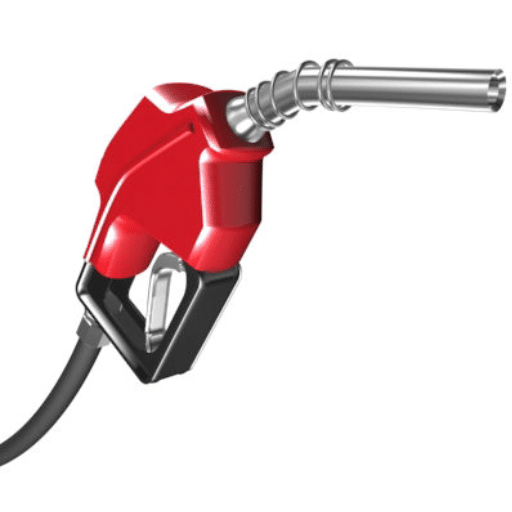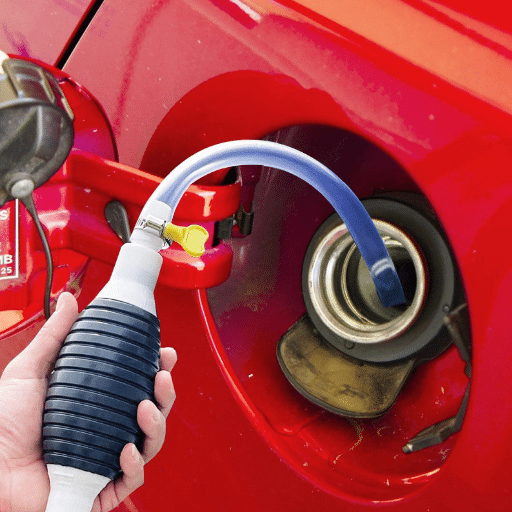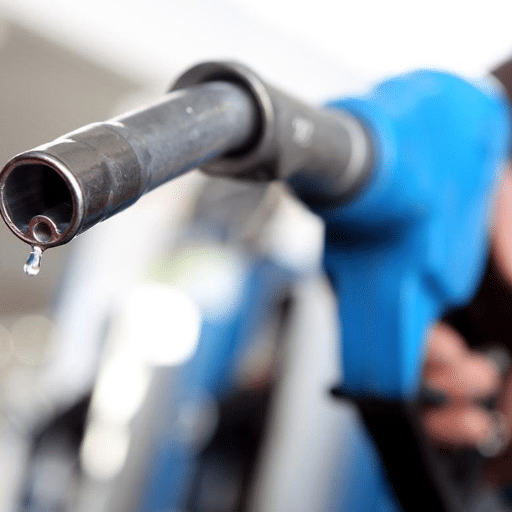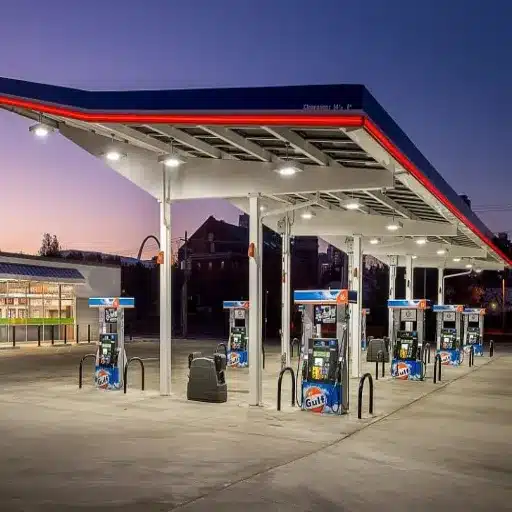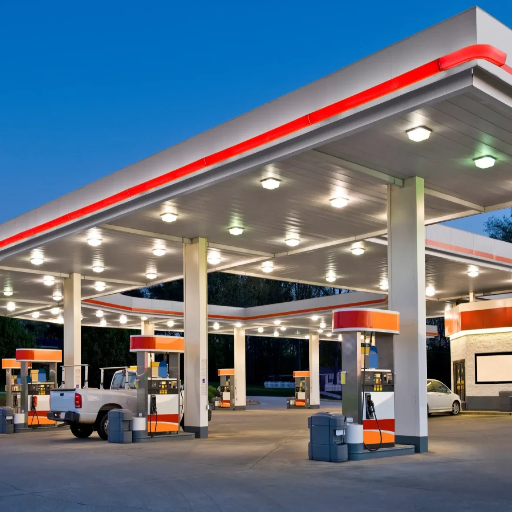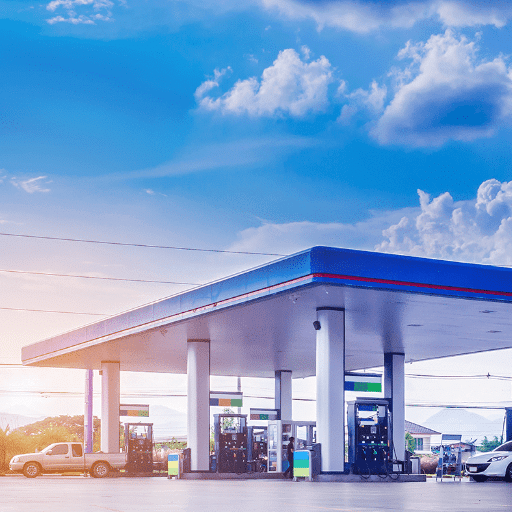Fuel management has evolved significantly from manual tracking to the latest technologies, with the automated fuel dispenser at the center of this transformation, aiming for efficiency, accuracy, and convenience. These computerized fuel dispensers are being used to the advantage of fuel management operations. Whether you are running a fleet or supplying fuel to a station, these modern systems ensure the highest levels of accuracy in measuring usage, minimizing waste, and further improving productivity. This article will examine how automated fuel dispensers are revolutionizing fuel management, highlighting their key features and benefits, as well as their pivotal role within the modern fueling infrastructure. Stay tuned as we witness how this technology promotes the future of fuel management.
Introduction to Automated Fuel Dispensers
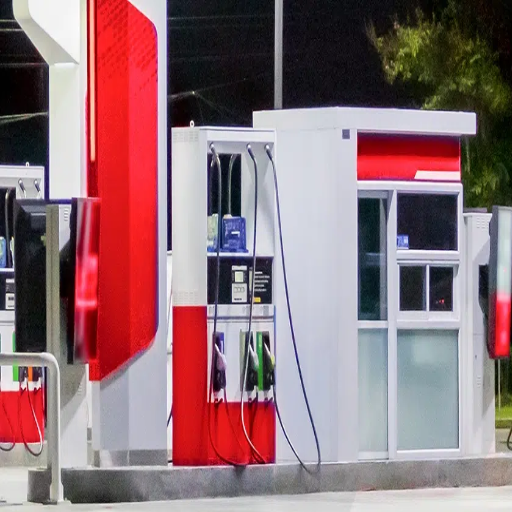
Fuel Island’s highly technical and advanced systems are responsible for streamlining the fueling process by automating major tasks involved in dispensing fuel, tracking, and payment. They are equipped with technologies that accurately measure fuel, safely conduct transactions, and collect real-time data to help the business minimize errors and improve efficiency. The systems find their applications across various sectors, where logistics, transportation, and retail fueling play a crucial role in managing fuel consumption and costs. By implementing building automation, they reduce human intervention and enhance operational accuracy, resulting in improved fuel management practices.
What is an Automated Fuel Dispenser?
An Automated Fuel Dispenser (AFD) is a self-service machine designed to automate the fuel dispensing process, typically used at gas stations, commercial refueling sites, and industrial facilities. These dispensers are equipped with advanced technology that streamlines fuel delivery, reduces waiting times, and enhances user convenience. Most AFDs are integrated with card readers, secure payment systems, and user-friendly interfaces, enabling customers to pay for fuel directly at the pump using credit or debit cards, fleet cards, or even mobile payment apps.
One key feature of modern AFDs is their ability to connect with centralized management systems, providing real-time data on fuel usage, stock levels, and transaction history. For instance, industry reports highlight that advanced dispensers can track fuel consumption down to 0.001 gallons, enhancing accuracy for fleet operators and retail businesses. Additionally, AFDs often incorporate safety mechanisms, such as leak detectors, pressure regulators, and automatic shutoff valves, to ensure safe and efficient operations.
The adoption of automated fuel dispensers has grown steadily in response to rising demand for improved operational efficiency and convenience. Research shows that the global automated fueling station market is projected to reach tens of billions of dollars in value by the late 2020s, driven by increasing vehicle ownership and advancements in technology. Whether in urban or industrial settings, these systems play a pivotal role in modern fuel management, providing businesses with the tools to control costs and enhance customer satisfaction.
Benefits of Automated Fuel Dispensers
Reduced Refueling Time
Automated fuel dispensing facilitators offer numerous benefits in streamlining the fuel management process, benefiting both the selling companies and the purchasing consumers. One such benefit is the significantly reduced time for refueling. Because automated systems work to streamline the process with the least amount of manual intervention, customers come and fuel quickly and satisfactorily.
Modern Payment Methods
The dispensers also support some of the more modern payment methods, including contactless payments and mobile app integration, thereby enhancing user convenience and security. Industry data indicate that contactless payment adoption is on the rise in fuel stations, with more than 60 percent of global fuel retailers expected to implement such systems by 2025.
Enhanced Operational Transparency
Enhanced operational transparency represents yet another advantage. The systems often feature real-time monitoring and analytical solutions that enable businesses to track fuel consumption, detect suspicious activities such as leaks, and optimize inventory management. This will reduce operational costs while negatively affecting the environment by maximizing resource management.
Improved Safety Features
The systems will also enhance safety with emergency shut-off controls and danger alerts during unsafe fueling conditions. For industrial uses, the system supports fleet management by allowing pre-authorized fueling for registered vehicles and also decreases the chances of fuel theft.
With an emphasis on speed, security, and sustainability, and a changing perspective, the fuel retail market is evolving to meet the ever-growing demand for contemporary fuel solutions.
How Automated Fuel Dispensers Work
Combining advanced technology and integrated operations, automated fuel dispensers attempt to smooth the refueling process. Essentially, embedded systems, which involve sensors, microcontrollers, and software, base their operations on dispensing fuel carefully and providing a customer experience. When a customer commences pumping, credentials are verified through secure card readers or mobile payment options. Few systems have been designed to accept contactless payments, allowing for faster transactions and greater convenience.
IoT Integration & Communication
Communication between the dispenser and central control software occurs in an approach that enables real-time updates on inventory, transactions, and operational status. Such interconnectivity is enabled by the IoT (Internet of Things) technology, which allows for the smooth control of a fleet fueling operation or a large-scale station network. A reduction in fuel theft of up to 20% has been reported through the enforcement of pre-authorized access to fuel, as per various studies, using these IoT-integrated dispensers.
Precision & Environmental Protection
Traditional fuel dispensers are nowadays equipped with precision meters and flow-control valves to ensure accurate fuel flow, minimizing any wastage. For environmental protection, some systems now come equipped with vapor recovery technology to capture fuel vapors that arise during the dispensing operation. Additionally, some dispensers can provide AI-driven alerts for maintenance, enabling operators to prevent downtime by alerting them when the system may be malfunctioning.
This repertoire of features means automated fuel dispensers would improve not only customer convenience but also operational efficiency, security, and environmental stewardship in refueling activities.
Understanding Fuel Management Systems
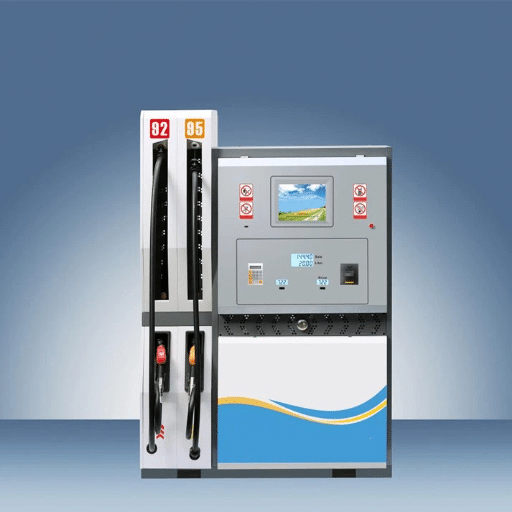
A fuel management system monitors, controls, and optimizes fuel utilization in all levels of operations. Such a system also helps track fuel consumption, prevent unauthorized access, and ensure accurate reporting, thereby minimizing waste and costs. As it collects real-time data and automates processes, the system leads to higher fuel efficiency and provides valuable insights for informed decision-making. Business operators use these to keep track and engage in sustainable fuel operations.
Components of a Fuel Management System
Fuel Monitoring
Fuel monitoring is the fundamental aspect of the fuel management system. In general, fuel monitoring utilizes sensors, flow meters, and automated tank gauges to measure and monitor fuel level changes in real-time. Advanced sensors employ a precise method of registering temperature, pressure, or flow, allowing fuel to be tracked more accurately across varying environmental conditions. For example, automatic operators can record fuel consumption to the nearest tiny fraction of a gallon, thereby improving accuracy and eliminating discrepancies.
Software and Data Analytics
Centralized software platforms facilitate the analysis and processing of data collected from hardware components. These platforms are also equipped with features like dashboards for real-time monitoring, fuel usage reports, and predictive analytics for fuel demand. Being integrated with cloud-based software systems, they allow access to data from anywhere, thus providing greater control for fleet managers. Studies indicate that optimization through analytics tools can reduce fuel waste up to 20% by optimizing routes and operations.
Access Control Systems
Access control components, such as card readers, PIN verification devices, and RFID technology, are installed to avoid the unauthorized use of the fuel. These ensure that fuel is dispensed only to authorized personnel or vehicles. For instance, RFID-equipped gas pumps would promptly verify the vehicle’s details before dispensing the fuel, thereby reducing the likelihood of theft or misuse.
Telematics Integration
More advanced fuel management systems are typically integrated with telematic devices in vehicles. Such devices provide GPS positions, vehicle diagnostics, and driver behavior data, which can be used to detect inefficiencies such as idling or aggressive driving. Studies indicate that telematics, when integrated with fuel systems, can improve fuel economy by up to 15%, making it a crucial consideration for fleet operators.
Fuel Inventory Management
Inventory tracking, delivery, usage, and level of fuel. Automated alerts on low-level fuel or possible leaks in a timely manner can help a company prevent downtime in production due to unexpected fuel shortages. According to the company’s report, those that employ AI in inventory management have incurred fewer operational costs associated with fuel procurement.
Mobile Connectivity and Applications
Mobile apps significantly enhance the functionality of fuel management systems, enabling users to track fuel usage, schedule maintenance, and access reports on their mobile devices, such as phones and tablets. Mobile alert notifications ensure that any manager can respond promptly to problems or emergencies, facilitating smooth operations.
Our integration of the above components presents a holistic view of fuel management, resulting in greater cost savings and operational sustainability. These systems must be installed in companies that aim to become environmentally conscious without compromising operational excellence.
Integration with Automated Fuel Dispensers
Automated fuel dispensers were actually at the forefront of fuel management modernization, equipped with utmost ease of operation and a reduction in manual errors. The dispensers feature advanced sensors, RFID technology, and IoT connectivity, enabling them to interface seamlessly with centralized management platforms. Through such interfaces, businesses get a real-time feed on fuel levels, refilling patterns for vehicles, and auto-billing processes.
Pivotal to the advantage set is the identification and prevention of fuel pilferage and unauthorized use. Studies show organizations have a 20% reduction in fuel discrepancies after installing these systems. Automated dispensers also reduce errors made on each transaction, refuel fleets more quickly, and replenish fleet vehicles faster, thereby increasing overall efficiency.
One of the other benefits that come along is the consolidation of data from multiple dispensing points into a single dashboard display. An overview of fuel usage trend analysis facilitates high-level decision-making and enables operators to optimize costs. The integration of automated fuel dispensers with cloud platforms provides additional flexibility for fleet managers to access information and make data-driven decisions, regardless of their geographic location.
By investing in automated fuel dispenser systems, a business is assured of transparency in its operations and is better equipped to adopt sustainable and efficient fuel use.
Key Features of Modern Fuel Management Systems
- Real-Time Monitoring and Reporting: Modern fuel management systems have a focus on tracking fuel consumption, inventory levels, and dispensing activities in real-time. This data enables businesses to accurately monitor fuel usage, identify discrepancies, and address potential issues promptly, thereby improving overall accountability.
- Cloud-Based Integration: These systems, utilizing a cloud-based platform, empower operators to access data from any location. Fleet managers can generate reports, analyze performance metrics, and make decisions independently, rather than having to be present at a specific site.
- Automation and Accuracy: Automated fuel dispensers eliminate manual entry errors, thereby increasing the accuracy of fuel consumption records. Hence, from human error, operational efficiency gets enhanced, and data stays reliable for audit and analysis.
- Improved Security Features: The advanced fuel management solutions utilize secure access control measures, such as RFID tags or PIN-based authentication, to ensure that only authorized users can dispense fuel. By implementing these controls, unauthorized use is prevented and fuel theft is minimized.
- Sustainability and Cost Efficiency: These systems typically incorporate conservation measures, waste reduction initiatives, and sustainability practices. Moreover, the automated insights guide the business to reduce idle time or optimize fuel deliveries for cost savings.
By utilizing the features offered, businesses are further enabled to achieve operational efficiency, enhanced accuracy, and environmentally friendly fuel usage practices.
Impact on Gas Station Operations
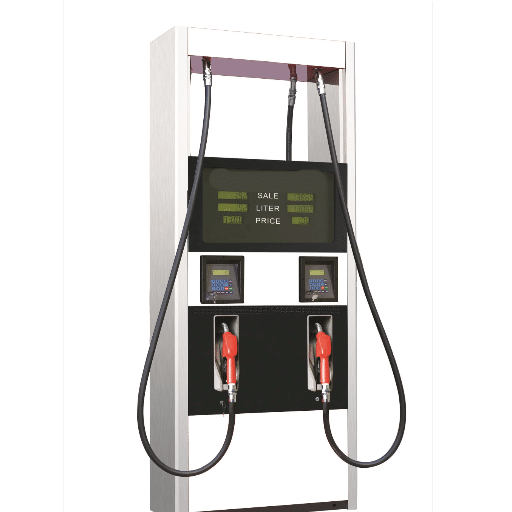
The likes of automated fuel management systems tend to have one particular effect: to enhance tasks related to gas stations, such as inventory and fuel loss management, while simultaneously simplifying administrative work. The systems provide fuel levels and sales information in real-time, allowing operators to make timely stock replenishments and ensuring they do not run short. It helps reduce human error and irregularities in record-keeping, allowing suspicious situations of fuel theft or leakage to be resolved quickly. Optimized daily operations and accuracy ultimately led to more efficient operations and improved service to customers.
Efficiency Improvements
Advanced fuel management systems have a beneficial effect on gas station operations by using technology and data analytics to their advantage. Take, for example, automated tank gauging systems, which can sense and report fuel levels with 99% accuracy, thereby virtually eliminating the need for manual checking, which leads to human error. Furthermore, the integration of cloud platforms within the system enables centralized monitoring of operations across multiple stations, thereby reducing downtime. Research has shown that advanced systems can help reduce fuel losses by 40%, thereby saving significant amounts of money. Another advantage of advanced technological solutions is that they speed up payments with digital methods and automated processes and reduce customer muss by about 30%. Hence, when these technologies are applied at gas stations, they streamline the internal processes while providing customers with an effortless and pleasant experience.
Cost Savings through Automation
| Automation Area | Cost Reduction | Key Benefits |
|---|---|---|
| Inventory Management | 25% reduction in inventory costs | Real-time monitoring, reduced overordering/understocking |
| Labor Costs | Up to 20% reduction | Self-service kiosks, mobile payment, reduced manual handling |
| Maintenance | 15% savings in repair costs | Predictive analytics, scheduled servicing |
The door of automation provides opportunities to streamline operations further and cut costs across industries, including fuel retailing. Automated inventory management systems enable gas stations to monitor real-time fuel levels, thereby reducing incidents of overordering or understocking. A report states that such systems can reduce inventory costs by 25% and eliminate human error.
Besides, the self-service kiosks and mobile payment could virtually eliminate all manual cash handling, slashing operational overhead while enhancing transaction rates. Reports have indicated a potential up to 20% reduction in labor costs attributed to these technologies. Another area where automation helps is maintenance, through predictive analytics, as station managers can predict equipment needs and schedule servicing before costly breakdowns occur, thereby saving 15% in repair and replacement costs.
These kinds of developments demonstrate that automation can significantly enhance customer experience while also providing businesses in the highly competitive fuel retail arena with tangible financial benefits.
Enhancing Customer Experience
Developments in automation technologies are enhancing customer experiences, bringing in convenience, speed, and personalization in the fuel retailing industry. Payment on the go, and pay at kiosk and self-service options-they all cut short long waiting periods. It is reported that 70% of today’s customers choose a company when they offer digital payment options.
Furthermore, Artificial Intelligence and data analytics have their way of refining the fuel retailers’ promotion and loyalty programs based on customer preferences. According to research, sales can increase by 20% if offers are personalized for customers, and this also helps retain brands when these offers create a sense of freedom. Other such innovations, including intelligent tank monitoring, enable auto-prompt notifications to customers, informing them when to refill, thereby providing a seamless and proactive customer experience.
The other area that saw significant improvements is frictionless interaction, including dollars and cents, useful mobile apps to locate a station near you, view fuel prices and quality, access grant-level discounts, and pre-select services on the phone before arrival. This system saves time and creates satisfactory customer engagement. Investing in this technology will ensure that fuel retailers remain competitive in this rapidly evolving tech landscape.
Advanced Technologies in Fuel Dispensing
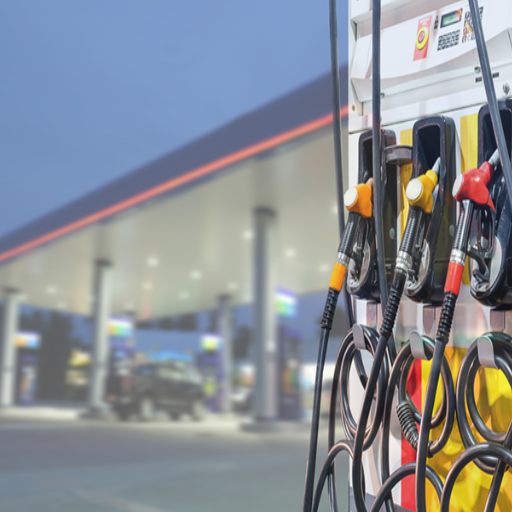
Current fuel dispensing technology highlights efficiency, accuracy, and user convenience. Additionally, automated dispensing systems are now available to ensure fuel is measured accurately and minimize wastage. Bright fuel dispensers are equipped with digital screens that display real-time information. Contactless payments accelerate transactions, enhancing security as customers demand fast and seamless services. The IoT is being integrated with these systems to provide uninterrupted monitoring of fuel levels, equipment health, and system performance, thereby ensuring the smooth operation of operations and reducing downtime. All these developments have modernized the refueling experience for both business and consumer users.
Use of RFID in Fuel Dispensers
RFID Technology Implementation
An RFID (Radio Frequency Identification) technology used in refueling has enhanced the operational capacity and efficiency of refueling mechanisms, benefiting both service providers and their clients. If RFID tags are placed in vehicles and readers in dispensing mechanisms, then this combination will enable the realization of automated identification and payment processes, thus reducing the time spent at fuel stations. For instance, studies emphasize that an RFID-enabled system can reduce transaction time by up to 30%, thereby improving throughput during peak operational hours.
Additionally, the RFID system can track fuel usage in real-time, providing accurate fuel consumption data for fleet management. By better policing their fuel consumption, businesses with RFID protection for fuel usage have witnessed a reduction of up to 15% in wastage, as these RFID systems prevent unauthorized fuel consumption. This system, by keeping records based on data, dramatically reduces the errors of human record-keeping and, most importantly, helps prevent fuel theft —a problem that large fleets have struggled with for many years.
On the customer side, the RFID gives a complete and contactless experience. There is no longer a need for cash or card payments at the pumps, as payments will be automatically linked to a pre-registered account or company system, offering convenience and security. In essence, refueling with an RFID-enabled refueling system becomes a significant stepping stone toward smart refueling operations, promising greater efficiency, cost savings, and improved user satisfaction.
Automated Fuel Delivery Systems (AFDS)
Automated Fuel Delivery Systems (AFDSs) form a revolution in the field of fueling technology, providing precision, convenience, and efficiency. These systems automate and utilize IoT technology to deliver a seamless fueling experience to end consumers and businesses. AFDS eliminates manual errors, provides the correct fuel, and reduces unnecessary waiting times at the fuel station.
Key AFDS Features
Key features of AFDS include automated dispensers with smart sensors to monitor fuel levels, detect vehicle needs, and deliver the precise amount of fuel to vehicles. Many systems have integrated mobile apps or fleet management systems, through which users can monitor fuel consumption, track expenses, and view delivery status in real-time.
| AFDS Improvement | Performance Gain | Impact |
|---|---|---|
| Refueling Time Reduction | Up to 30% | Faster turnaround, reduced waiting |
| Annual Cost Savings | 10%-15% | Improved monitoring and workflow |
| Fuel Waste Reduction | Significant decrease | Environmental protection, cost efficiency |
From the data perspective, measurable improvements in station productivity and customer satisfaction have been reported with AFDS. For example, automated systems can reduce the average refueling time by up to 30% compared to traditional systems, thereby minimizing the waste of resources due to overfills or spills. Furthermore, companies using AFDS also reported reduced operational costs, with studies showing a potential annual savings of 10%-15% through improved monitoring and workflow enhancements.
The other side also takes care of protecting the environment. Inaccurate dispensing and fuel wastage are reduced over a specific period with AFDS systems, thereby curbing the emission of greenhouse gases resulting from overuse or leakage. Coupled with intelligent payment processing, such as RFID or mobile payment integration, AFDS can transform a typical fuel purchase into an attractive, environmentally friendly endeavor.
Future Trends in Automated Fuel Technology
The future of automated fuel technology is expected to witness significant developments, with new innovations emerging and increasing demand for sustainability and efficiency. An initial trend is that AI and machine learning will significantly assist in gauging, dispensing, and fuel systems. These technologies can facilitate predictive maintenance to reduce downtime and enhance system performance, while creating customized fueling experiences based on user data. A further trend is the growing adoption of IoT devices and connected systems that provide real-time monitoring, data analytics, and communication among components towards operational efficiencies.
Green Alternative Integration
The next prominent trend is moving towards greener alternatives. Increasingly automated systems are being developed to accommodate biofuels, hydrogen, and EV charging, in line with efforts being made worldwide for carbon footprint reduction. This will also mean a greener route to digital payments, with payment tools like blockchain providing a secure, transparent, and automated way of paying, further improving convenience for end-users as well as operational reliability. The above developments mark a future wherein automated fuel technology will be equally focused on enhanced efficiency, improved sustainability, and a more ergonomic fuel infrastructure.
Challenges and Considerations
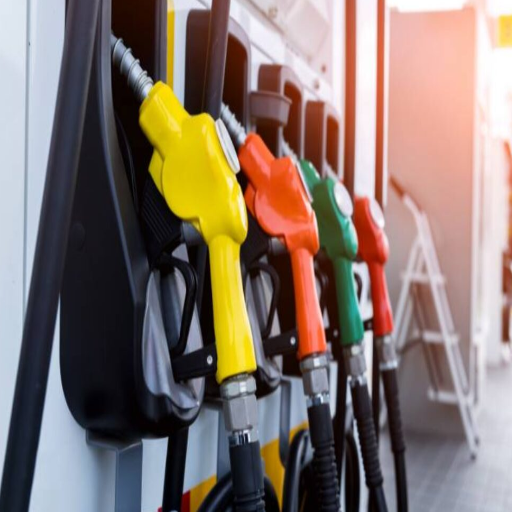
Several challenges must be considered when implementing automated fuel technologies. First, upfront costs for infrastructure development and technological integration can be very high, which hinders widespread adoption. Secondly, there is the matter of ensuring data protection and user privacy, as digital payment platforms store highly sensitive financial and personal information. Then comes operational reliability: any failure or error in an automation system can completely halt the provision of services and negatively impact the user experience. Lastly, we must ensure that all technologies are harmonized and compliant with regulations applicable in each region, so that users are spared from having to navigate a patchy fuel network. Addressing all these issues would consequently help provide a successful realization of an automated fuel solution.
Security Concerns with Automated Systems
Cybersecurity Threats
Automated systems, while creating efficiency, often encounter pressing security challenges that must be mitigated to shield users and preserve trust. First, one of the primary concerns is about cyberattacks that can exploit vulnerabilities in software or hardware to steal sensitive information. Ransomware attacks, which have increased by 62% over the past few years, have targeted automated infrastructures to bring systems to a halt and extort money in exchange.
Data Privacy Issues
Another pressing issue is data privacy, as automated systems often collect, store, and process large amounts of user data. What if a breach occurs? This creates exposure of the very data it safeguards; there have been examples where millions of users’ information was breached due to weak encryption. Additionally, these automated systems have become targets for phishing attacks, which are increasingly relying on sophisticated methods to harvest credentials or circumvent authentication controls.
IoT Vulnerabilities
The addition of IoT allows for another layer of complexity in many automated networks. IoT devices often lack substantial security protocols, thereby maintaining a larger attack surface. For instance, over 1.5 billion IoT breaches occurred in a year because the device-level security was relatively weak.
These, of course, can be avoided if companies institute strong security measures, such as multi-factor authentication, requiring prompt software updates, encrypting user data to the highest standard, and monitoring any factors that might signal unusual activity. Operational vigilance and the adoption of the latest technologies to secure automated systems can go a long way in reducing the incidence of breaches and misuse.
Maintenance and Support for Automated Fuel Dispensers
Maintenance and support are vital in ensuring the proper functioning of and extending the longevity of the machines. My thinking is that the optimal approach would be an inspection regime combined with continuous software updates to close any exposure to vulnerabilities, along with immediate intervention in the event of technical difficulties. By adopting a proactive approach, I aim to minimize downtime and ensure the smooth operation of the dispensers.
Compliance with Regulations
Regulatory Compliance Requirements
Implemented with due diligence, the regulations maintain safety, environment, and legal standards for automated fuel dispensers operating in the market. Operators shall verify at regular intervals if dispensers still conform with local, state, and federal regulations concerning calibration requirements, environmental protection, and payment security, such as PCI compliance. The premises must also be subject to regular audits and inspections to maintain compliance. Any amendments on the regulatory front also require instant implementation to avert penalties or possible cessation of operations. Compliance protocols must be followed as a routine to ensure the business remains on the right side of regulatory authorities and maintains its credibility.
Reference Sources
M. Volkhonov’s Study on Automation in Dispenser Systems
Automatic Vehicle Fueling System using PLC Controlled Robotic Arm.
Fuel Cell Electric Vehicles (FCEV): Policy Advances to Enhance Commercial Success
Frequently Asked Questions (FAQs)
What is an Automated fuel management system?
An automated fuel management system enables fuel station operators to track and control fuel dispensing activities without requiring assistance from a gas station attendant. By synergizing efficiency and fraud detection mechanisms, these systems utilize modern technologies to maintain the integrity of billing and authorization for transactions.
How do fuel dispensers with electronic payment systems operate?
Fuel dispensers equipped with an electronic payment system enable the sale of fuel without the need for a gas station attendant. Customers can pay by selecting the fuel type and then completing the transaction using any cashless method. These methods make the process convenient for the customer and ensure speedy fuel dispensing.
What are some advantages associated with innovation in fuel dispensing systems?
Innovative fuel dispensing equipment offers several advantages, including more accurate measurement of fuel flow through fuel nozzles equipped with advanced flow meters and enhanced safety features. Dispensers incorporate a range of technologies to streamline processes, enabling fuel station operators to manage their fuel inventories better.
What function does the fuel flow meter perform in an automated fuel dispenser?
The fuel flow meter measures and records the amount of fuel delivered during a sale in an automated fuel dispensing system. This device ensures that customers are billed correctly and prevents disputable situations from arising. Real-time fuel flow data is also available for observation by fuel station operators.
What are some features that define advanced technology in fuel dispensers?
Some features of advanced fuel dispenser technology may comprise RFID for secure transactions, innovative fuel systems for different fuel types, and systems for enabling advanced maintenance. The entire set of features will enhance daily user experiences and also improve the fuel station operator’s ability to run their business efficiently.
How do automated fuel dispensers prevent fraud?
Automated fuel dispensers incorporate authorization protocols and electronic payment mechanisms to prevent unauthorized access and fraudulent transaction attempts. In this way, they ensure customers are billed correctly while allowing only authorized users to tend to the dispensing unit.
What are the functions of gas station attendants in automated fueling systems?
Automated fueling systems significantly reduce the need for gas station attendants; however, attendants are still present for equipment maintenance, customer assistance, and ensuring that safety protocols are adhered to. Their presence complements the customer service environment, especially for individuals willing to be walked through a complex transaction.
What type of fuel can these modern automated fuel dispensers dispense?
Modern automated fuel dispensers may dispense gasoline, diesel, and alternative fuels such as AdBlue. Due to the variety of fuel types, fuel station operators can cater to a broad range of customers’ needs and preferences.


